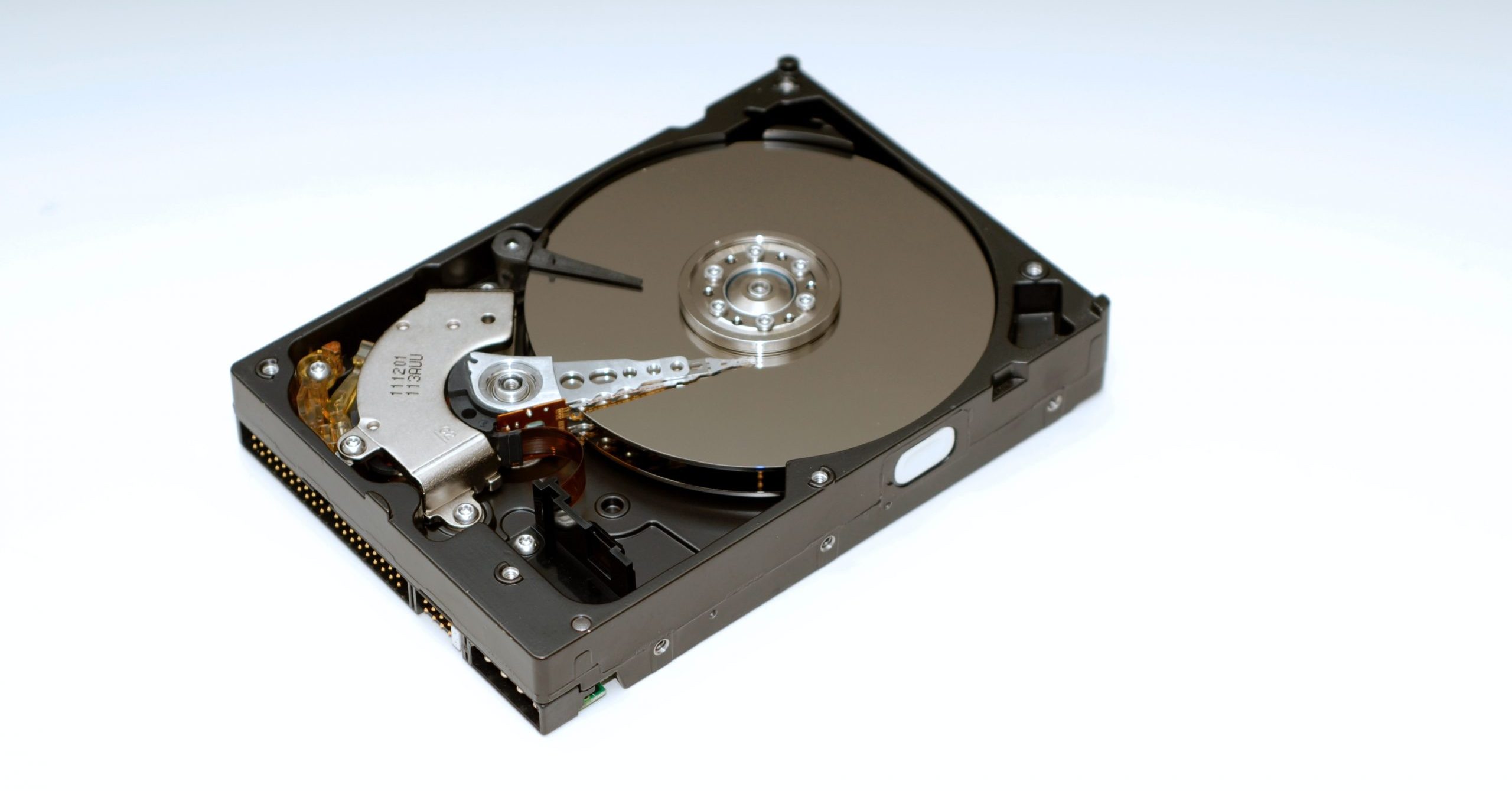In this enlightening conversation on Vida Digital, Alex Neuman speaks with Angela Keary of DriveSavers Data Recovery about the human stories behind lost data—from families desperate to recover irreplaceable memories to companies fighting ransomware attacks.
NY Times: E.R. for Hard Drives

Originally published by The New York Times.
July 14, 2005
NOVATO, Calif. – He knew it was important, but backing up his hard drive was the last thing on Ryan Risdal’s mind. Mr. Risdal, 35, was too busy rearing four children and caring for his ill wife.
One day after her death last August, Mr. Risdal was trying to recover some pictures from his computer to display at his wife’s funeral. But the computer would not cooperate, and the local repair shop told him he was out of luck. The drive was inoperable, and nothing could be retrieved.
“I had six years of digital pictures on the drive, and I hadn’t backed up in years,” said Mr. Risdal, a maintenance supervisor in Grass Valley, Calif., in the Gold Rush country northeast of Sacramento.
According to those in the data recovery business, computer users who think they can escape Mr. Risdal’s fate are mistaken. “Eventually, every hard drive will fail,” some even within months, said Todd Johnson, vice president for operations at OnTrack Data Recovery (www.ontrack.com), a firm specializing in recovering digital files.
The local repair shop referred Mr. Risdal to DriveSavers (drivesaversdatarecovery.com), another company offering data retrieval from hard drives, flash memory, diskettes and optical media. After several days’ work, DriveSavers had recovered his entire photo library.
If all computer users backed up their hard drives, the data recovery industry would barely exist. But the routine, like flossing teeth, is practiced regularly by few.
And as hard drive capacity explodes, the consequences of catastrophic failure mushroom. Hard drives now store not just documents but photos, music and movies as well, electronically embedded on a platter spinning at 10,000 revolutions a minute (300 times the speed of an LP record); access is by a read/write head floating a hair’s breadth above, and flying back and forth at 60 miles an hour. If the head falls onto the platter or picks up a jot of dust, the data can be rendered unreadable.
Not every hard drive’s files can be recovered, but rates are improving. “Eight years ago, 50 percent of our drives could not be restored,” said Scott Gaidano, DriveSavers’ co-founder. Now up to 90 percent of the data can be salvaged from 85 to 90 percent of drives, Mr. Gaidano said.
The cost can run to several thousand dollars – the bigger the rush, the higher the price.
Mr. Gaidano says that hard drives are so unreliable that they “should not exist today.” Yet they are ubiquitous – in laptops that are tossed onto airport security belts, and on iPods and camcorders used while jogging and maneuvering around moguls. When they fail, panic is often the reflex. Many call Mr. Johnson’s company, or ActionFront, DriveSavers and ESS Data Recovery, fearing that their most crucial records and most cherished memories have just been incinerated.
DriveSavers employs Kelly Chessen, a former suicide-prevention counselor, to calm distraught customers. “You get nervousness, anger, crying,” Ms. Chessen said. “People fear they’ll lose their jobs” if the data is not recovered. And at times they say that life will no longer be worth living. “I ask them if they’re really thinking about committing suicide,” she said. Fortunately, no one has.
DriveSavers operates from an anonymous office building in Novato, 24 miles north of San Francisco, that houses a “clean room” for inspecting drives and separate data extraction rooms for the most common computer operating systems.
DriveSavers receives some units that to most would look unsalvageable. Outside its executive offices, the company displays some of its more challenging successes: hard drives that have been burned, submerged in saltwater or run over by trucks.
Depending on the size of the drive, the complexity of the problem and the requested turnaround time, recovery costs at DriveSavers range from $500 for the slowest service – five to seven days – and fewest recoverable files, to $8,900 for a rush job, which will begin the moment the drive arrives and continue around the clock until the data has been extracted.
For those customers who can wait up to seven days, recovery tops out at $2,700 for a drive up to 600 gigabytes. For one- to two-day turnaround, expect to pay $900 to $3,900. When nothing can be recovered – typically when drives cannot spin or data has been overwritten – DriveSavers charges a $200 inspection fee.
After hearing of Mr. Risdal’s plight, DriveSavers restored his data free, and even bought Christmas presents for his children. But for most, rescue comes at a steep price. “I learned a very important lesson and it cost me a lot of money,” said John DeVries, general manager of a sporting goods company in Auburn, N.Y.
In May, Mr. DeVries’s three-year-old hard drive crashed on his Dell Latitude x200 laptop, taking with it a year’s worth of company e-mail, family photos and 600 business contacts stored in Outlook.
“I was really panicked. I really felt lost; it was everything I had,” said Mr. DeVries, who knew to back up but had not done so in several months. He paid $2,700 to get all his files back.
When a drive arrives at DriveSavers or one of its competitors, it is typically inspected in the cleanroom to prevent dust contamination. If it got wet, it is submerged in a solvent to remove residue. Because data can be retrieved only from operating drives, the company will try to get the mechanism running temporarily – in the case of DriveSavers, by using components from its inventory of more than 10,000 different models.
A copy of the drive’s contents is then recorded on a server for protection and another copy is transferred to a functioning hard drive. Using commercial and proprietary software tools, the company extracts the data from that copy. Retrieved files are sent to the customer using DVD’s, a new hard drive or Internet file transfer.
The company keeps all files confidential and erases them from its servers one month after delivery to the customer. Child pornography, however, is not covered by the confidentiality agreement.
Is it worth spending thousands of dollars to retrieve files? It was for William Storkson, a motion picture sound designer in Novato who lost four reels of work on the independent film “Target Audience 9.1” when an external drive connected to his Apple Power Mac G5 malfunctioned. He had bought the drive as a backup three months earlier when his Mac’s two-year-old external drive started to falter. That drive was by this time dead.
“To rebuild the data from scratch would have taken me one to two months of 40-hour weeks,” he said.
Instead, Mr. Storkson paid DriveSavers $2,300, and in three days he had all his files back.
Last November, Suzy Shechtman of Great Neck, N.Y., was editing scenes for “The Hidden Life,” a film about an order of Episcopalian nuns when the six-month-old, 200-gigabyte drive failed on her Power Mac G4. She tried to revive it with various commercial disk utility programs, but nothing worked.
“I had bought a second hard drive and never used it to back up, though I meant to,” Ms. Shechtman said. “I figured the project was all over.”
Fortunately, the drive maker, Western Digital, agreed to pick up the recovery cost. Ms. Shechtman now keeps multiple copies on two 200-gigabyte drives and one 600-gigabyte internal drive. But even that is not necessarily a fail-safe strategy. “Out of six drives I’ve bought, five have been replaced, and the longest lasted only one year,” she said.
But when it comes to backing up data, most people remain unconcerned – even Mr. Gaidano, despite all the troubles he has seen.
“I’ve lost more data than most because I do not back up my laptop,” he said. “The day I back up is the day I should shut the company down.”





